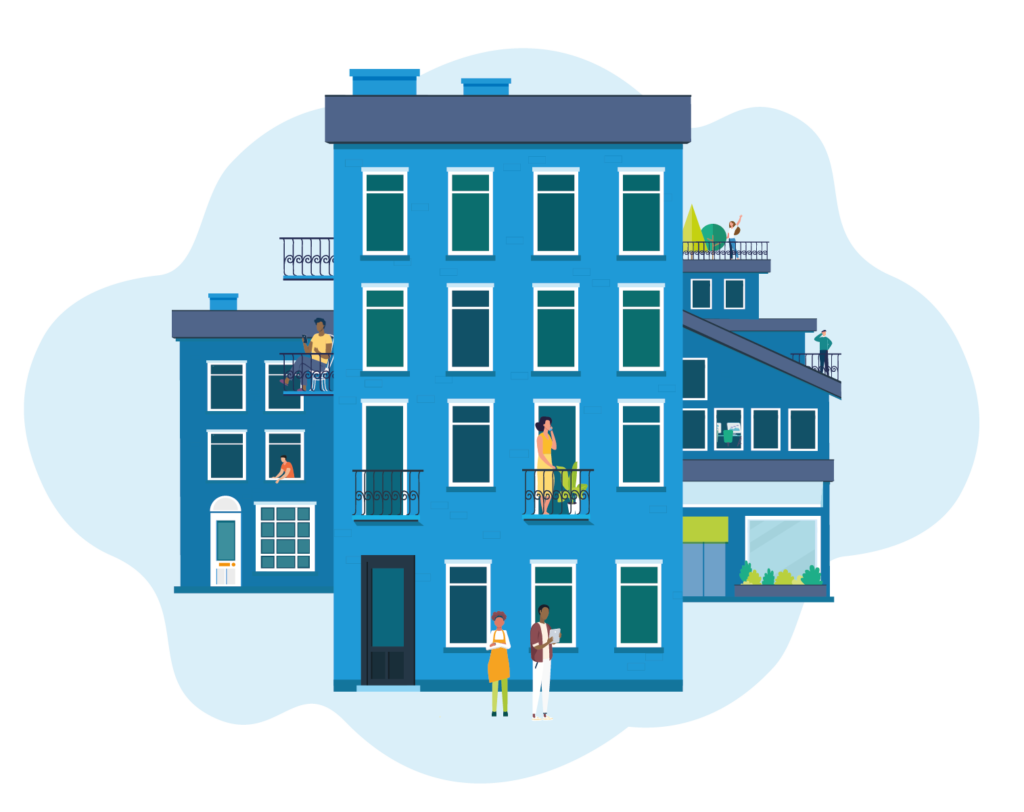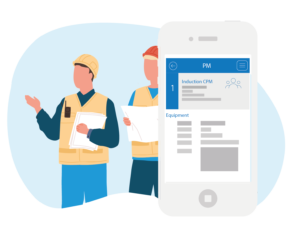What is multifamily property?
Understanding multifamily properties in today’s real estate market is essential for investors and property managers. For investors, these properties present lucrative opportunities for diversifying portfolios and securing long-term income streams. Property managers with these properties in their portfolios will need to know how to navigate the unique challenges and rewards that come with managing homes for multiple families.
In this guide, we explain what is multifamily property, the different types, and the future of multifamily housing with multifamily property management software.
What is a multifamily property?
A multifamily property is a single building or a complex of buildings that contain multiple housing units. These units are designed for residential use, with each functioning as a separate home. Each unit will have its own living area, kitchen, bathroom, and bedrooms.
Types of multifamily homes
Multifamily homes come in a variety of forms, each offering different living experiences and investment potentials. Whether you’re looking to rent, buy, or invest, understanding these types is crucial for making informed decisions.
Duplex or Triplex
A duplex is a multifamily building that can accommodate two separate families under one roof. Each side of the duplex has its own entrance, utilities, and complete living facilities. This type of property is an excellent option for those seeking a blend of private homeownership with the investment potential of renting out the adjacent unit.
A triplex is segmented into three independent units, each with its own living areas, utilities, and entrances. Homeowners who invest in a triplex can choose to live in one unit while renting out the other two, which can cover mortgage payments and potentially generate extra income. Investors who are not seeking a primary residence can leverage all three units as rental properties, maximizing their return on investment through multiple income streams.
Semi-detached house
A semi-detached house is a single-family home that shares a common wall with another single-family home. Each operates as a standalone residence with its own property entrance, yard, and all the amenities of an independent house.
Semi-detached houses offer a balance for those seeking a suburban lifestyle while still being part of a multifamily unit. These houses are ideal for those who enjoy their own space but don’t mind having neighbors within close proximity. Semi-detached homes also tend to be more affordable than completely detached homes, making them a great way to invest in multifamily properties.
Townhouse
A townhouse, also called a townhome, is a residential property that is connected side-by-side to other townhouses in a long row. These individually owned homes are typically tall and narrow with multiple floors.
Owning a townhouse typically involves becoming part of a Homeowners’ Association (HOA). The HOA can provide added amenities and maintain the property’s exterior and common areas. This communal structure has an additional fee but offers convenience for residents and investors who prefer not to manage these tasks themselves.
Condo
A condominium, known as a condo, is a private residence within a larger complex or building where each unit is individually owned. These units can range from high-rise buildings to townhouse-style layouts. They often include security services and shared spaces like pools, gyms, and gardens.
Condos will also have an HOA that typically handles exterior repairs, landscaping, and upkeep of communal amenities, making maintenance convenient for homeowners. For investors and property managers, the shared costs for maintenance can make it easier to manage as a rental property.
Who are multifamily homes best for?
Multifamily homes offer diverse benefits that can appeal to a wide range of individuals. For investors, these properties can be lucrative due to multiple rental income streams from a single location. They are also appealing for those looking to get into real estate with a relatively lower financial barrier compared to commercial properties.
Multifamily tenants can also find great value in living in multifamily homes. Multifamily properties typically offer a range of rental options, making them suitable for tenants with various income levels. These properties usually come with amenities that may not be available in single-family homes, like a pool, fitness center, and playground. They can also provide a sense of community, as tenants live near their neighbors.
Multifamily homes also are suited to property managers. Managing one location with multiple units can be more efficient than managing several single-family properties spread out over a wider geographic area. With the adoption of multifamily property management software, tasks such as collecting rent, scheduling maintenance, and communicating with tenants can be streamlined, making the job of a property manager more manageable and efficient.
What is the future of multifamily properties?
There are numerous multifamily housing trends that are having an impact on the future of multifamily properties.
Demographic trends indicate a strong demand for multifamily housing. Millennials and Gen Zers who are entering the property market show a preference for the flexibility and urban lifestyle that multifamily properties can provide. As Baby Boomers downsize in retirement, many are also seeking the convenience and lower maintenance lifestyle that these properties offer.
Urbanization continues to play a significant role in the growth of the multifamily home sector. With more people moving to cities in search of employment and a vibrant lifestyle, the demand for housing in urban areas is on the rise. Multifamily properties, often located in urban or suburban centers with easy access to amenities and public transportation, are well-positioned to meet this demand.
Changing societal attitudes are impacting the design and function of multifamily properties. There is a growing emphasis on sustainability, leading to the construction of multifamily buildings with green technologies and materials that minimize environmental impact. As remote work and flexible lifestyles become more common, the demand for multifamily homes with home office spaces may rise.
The advancement of multifamily property management software has made managing multifamily units more efficient. Such software can help investors and property managers monitor multifamily data, streamline operations, and improve the experience for tenants. This is empowering the sector to scale new heights, ensuring that multifamily properties remain an attractive investment opportunity.
FAQs about multifamily properties
Multifamily software used by the top ten NMHC managers
Take full control of the lead-to-lease process

Multifamily Tour Path Inspection Guide
Showing off your multifamily property is one of your first and best opportunities to “wow” prospective residents. As such, completing a tour path inspection is essential to a successful leasing experience. MRI Living is here to help you p…

